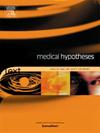Long Vax is delayed onset Long COVID
IF 2.1
4区 医学
Q3 MEDICINE, RESEARCH & EXPERIMENTAL
引用次数: 0
Abstract
Long COVID is a common chronic health condition that impairs daily functioning and social connection. It affects multiple organs and is marked by fatigue, post-exertional malaise, cognitive impairment, and many autonomic dysfunctions. Post COVID-19 Vaccination Syndrome (PCVS), Post Acute Covid Vaccination Syndrome (PACVS), or simply ‘Long Vax’ is a large set of similar symptoms that first manifest hours, days or weeks following a COVID-19 vaccination. Perhaps because of the pandemic’s public health imperative to vaccinate populations and prevent acute COVID-19 deaths, the Long Vax phenomenon has been slow to be acknowledged and to the frustrated patient community post-vaccine issues seem like a taboo medical topic. Meanwhile, evidence is accumulating that low-level persistence of SARS-CoV-2 virus in a variety of cell types and tissues may be the root cause of Long COVID symptoms. We propose that based on the similarity of patient-reported symptoms, symptom prevalence, and patient demographics that Long COVID and Long Vax are the same medical condition. Furthermore, we propose that both have the same underlying pathobiology; viral persistence of SARS-CoV-2. This hypothesis implies that the same treatments that help Long COVID patients will also help Long Vax patients. It is important that Long Vax patients be identified in Long COVID cohorts and included for subgroup analyses in Long COVID clinical trials. As biomarkers and diagnostic tests for Long COVID are developed and validated, this hypothesis becomes easily testable as it predicts that the same measures will also be useful for characterizing Long Vax patients.
“Long Vax”为延时型“Long COVID”
长冠状病毒病是一种常见的慢性疾病,会损害日常功能和社会联系。它影响多个器官,并以疲劳、运动后不适、认知障碍和许多自主神经功能障碍为特征。Covid -19疫苗接种后综合征(PCVS)、急性Covid -19疫苗接种后综合征(PACVS)或简称“长Vax”是在Covid -19疫苗接种后数小时、数天或数周内首次出现的大量类似症状。也许是因为大流行的公共卫生需要为人群接种疫苗并预防COVID-19的急性死亡,长疫苗现象迟迟没有得到承认,对于沮丧的患者社区来说,疫苗后问题似乎是一个禁忌的医学话题。与此同时,越来越多的证据表明,SARS-CoV-2病毒在多种细胞类型和组织中的低水平持续存在可能是长时间出现COVID症状的根本原因。我们提出,基于患者报告的症状、症状患病率和患者人口统计学的相似性,长COVID和长Vax是相同的医疗状况。此外,我们认为两者具有相同的潜在病理生物学;SARS-CoV-2的病毒持久性。这一假设意味着,对长COVID患者有效的治疗方法也会对长Vax患者有效。在长COVID队列中确定长Vax患者并将其纳入长COVID临床试验的亚组分析非常重要。随着长冠状病毒的生物标志物和诊断测试的开发和验证,这一假设变得容易验证,因为它预测同样的措施也将有助于表征长冠状病毒患者。
本文章由计算机程序翻译,如有差异,请以英文原文为准。
求助全文
约1分钟内获得全文
求助全文
来源期刊

Medical hypotheses
医学-医学:研究与实验
CiteScore
10.60
自引率
2.10%
发文量
167
审稿时长
60 days
期刊介绍:
Medical Hypotheses is a forum for ideas in medicine and related biomedical sciences. It will publish interesting and important theoretical papers that foster the diversity and debate upon which the scientific process thrives. The Aims and Scope of Medical Hypotheses are no different now from what was proposed by the founder of the journal, the late Dr David Horrobin. In his introduction to the first issue of the Journal, he asks ''what sorts of papers will be published in Medical Hypotheses? and goes on to answer ''Medical Hypotheses will publish papers which describe theories, ideas which have a great deal of observational support and some hypotheses where experimental support is yet fragmentary''. (Horrobin DF, 1975 Ideas in Biomedical Science: Reasons for the foundation of Medical Hypotheses. Medical Hypotheses Volume 1, Issue 1, January-February 1975, Pages 1-2.). Medical Hypotheses was therefore launched, and still exists today, to give novel, radical new ideas and speculations in medicine open-minded consideration, opening the field to radical hypotheses which would be rejected by most conventional journals. Papers in Medical Hypotheses take a standard scientific form in terms of style, structure and referencing. The journal therefore constitutes a bridge between cutting-edge theory and the mainstream of medical and scientific communication, which ideas must eventually enter if they are to be critiqued and tested against observations.
 求助内容:
求助内容: 应助结果提醒方式:
应助结果提醒方式:


